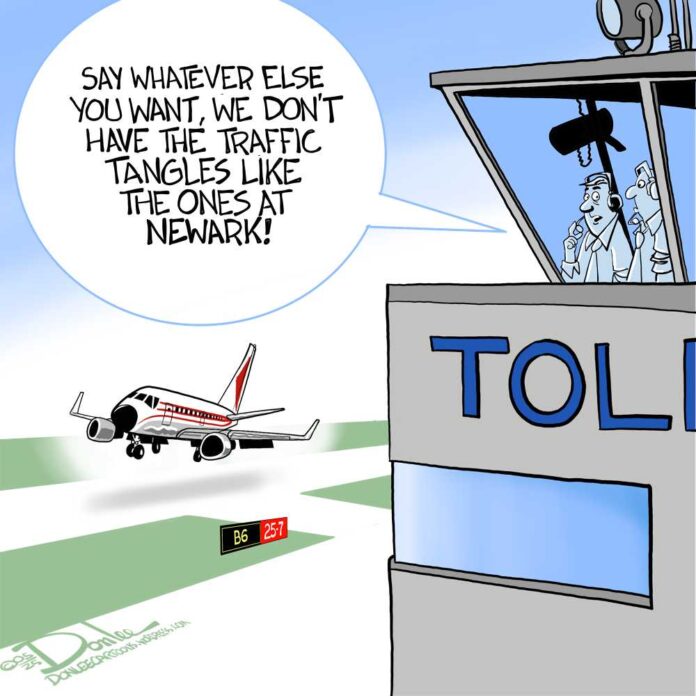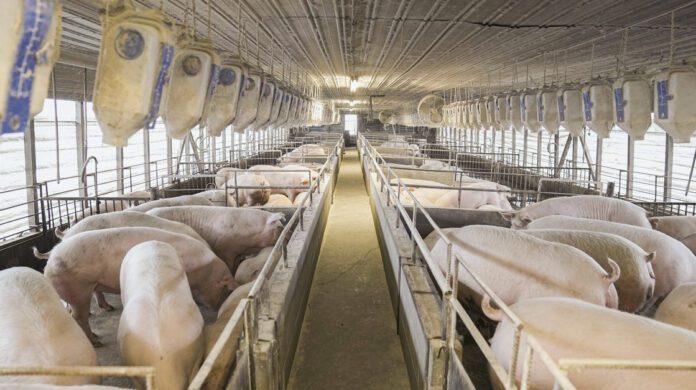NBC’s ‘The Paper’ inspired by Toledo newsrooms
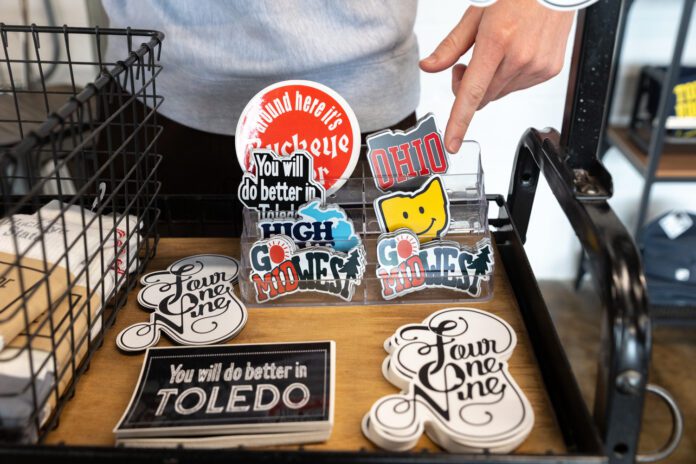
TOLEDO – A new spinoff to the beloved sitcom The Office was announced this month by NBCUniversal, and it’s gearing up for its first season debut on Peacock in September.
The new series, called The Paper, is the successor to producer Greg Daniels’ signature mockumentary style, but the location has now moved on from the Electric City (Scranton, Penn.) to the Glass City for a story centered around local journalism.
During the search for the location, FilmToledo was told the production had toured a number of different Midwest newsrooms to find a home for the new show, but was not definitively told Toledo would be the chosen location.
According to cleveland.com, “Editor Chris Quinn [of cleveland.com/The Plain Dealer] disclosed that producers of The Paper had approached his organization about getting Cleveland materials for use in the mockumentary series.” He told NBC “no.”
In short, “We were not going to be the subject of buffoonery,” Quinn said.
For now, it’s uncertain how far the search for a new location went, but production for The Paper started reaching out to a variety of Toledo fixtures in spring 2024, starting with the Toledo Regional Chamber of Commerce, who directed the sitcom team towards FilmToledo.
“It was really like an educational session for them, because they really didn’t know Toledo too well, but they really wanted to get it right,” said Michael DeSanto, executive director of FilmToledo.
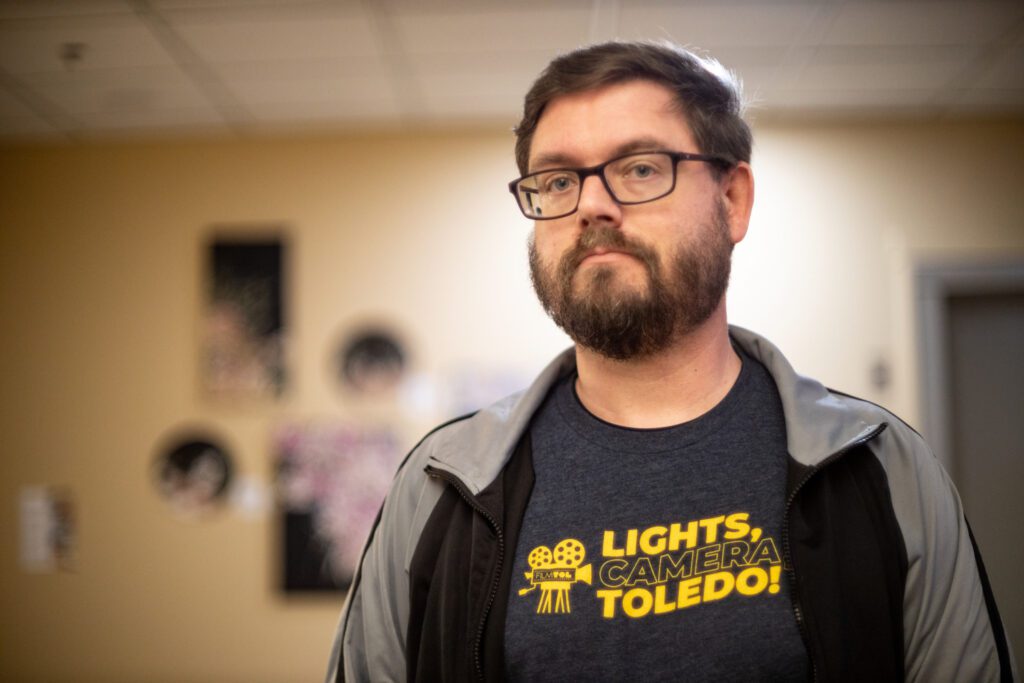
“At the time, we didn’t know that it was called The Paper. We knew it was connected with The Office, being written and produced by Greg Daniels and his team. But obviously, they couldn’t go into too much detail, but we already had a pretty good idea of what the project was about.
“Most of their work was done last year,” DeSanto said. “But they had gone into the [Toledo] City Paper and The Blade [for] a little bit for research, and from what we’ve heard, they did pop in to film a couple things.”
Riley Runnells was the editor of the Toledo City Paper at the time, and she got to meet one of her favorite actors during NBC’s fact-finding tour of Ohio’s fourth largest city.
“It was actually very random,” Runnells said. “It was presented to me via email that they [NBC] were researching for a show that they were putting together, and it was going to be about journalists in the Midwest.
“They came across my work online, and they wanted to shadow me, or they wanted to have their actor come in and shadow me for a day to see the logistics of running a newsroom.”
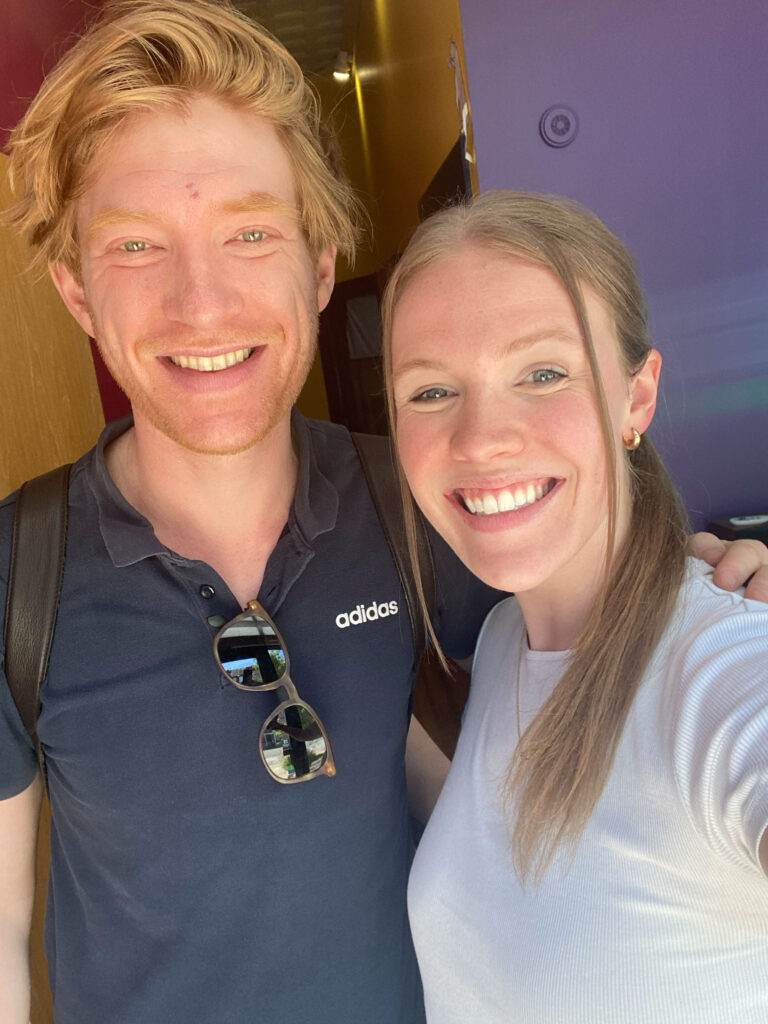
To Runnells’ surprise, Domnhall Gleeson, the lead in the 2013 movie About Time and the new lead for The Paper, showed up on the Toledo City Paper’s doorstep without any sort of entourage.
“I am a very, very big fan of his,” Runnells admitted. “I was expecting, you know, maybe a writer or a producer or somebody from the show to come in, but I did not expect the lead actor to come in. It was so exciting.”
Runnells went through her day as normally as she could, considering a famous actor following her, and then spent at least two hours giving Gleeson an in-depth understanding of the relationship she had with her newsroom.
Michael Koman, one of the show-runners for the show, reportedly visited The Blade, according to Runnells.
More vaguely, DeSanto also mentioned that NBC visited The Blade, Toledo’s oldest newsroom, although this visit seemed to happen before FilmToledo or the Toledo City Paper were aware of the project, according to a Blade article. It states, “Kim Bates, executive editor of The Blade, said writers for the show were at The Blade in December 2023, during which time they spoke with a variety of newsroom employees.”
Gleeson’s visit to Toledo happened in June 2024, so that may be an indication of what kind of newsroom is represented in The Paper.
No one except the NBC execs will truly know what The Paper will be like until it releases, but Runnells did not share cleveland.com‘s fears of being the butt of a joke.
“I think it shows a great deal of maturity to be able to laugh at yourself,” she said. “I’m certain that there will be some shots taken at the community, but I think what really makes that okay and what will make that funny is that they will also have a lot of really heartfelt moments regarding Toledo.
“There’s definitely going to be that pride for the local element, because you can’t have a show about a local newspaper and not have at least some of the characters be really passionate about where we’re living.”
One of the original cast members, Oscar Nuñez, who played the accountant Oscar Martinez on The Office, serves as a throughline between the two shows; he was reported to have told The Hollywood Reporter that he wanted the show to take place in a more cosmopolitan setting.
“Greg heard me and moved Oscar to Toledo, Ohio, which has three times the population of Scranton,” Nuñez said. “So it’s nice to be heard.”
A single still photograph has been released from the show, with lead actor Gleeson appearing to stand on top of a desk, and is presumed to be the newsroom for the Toledo Truth Teller, serving as an early glimpse into what will come out in the fall.
The set looks similar to that of The Office, with a few different set choices, as Toledo’s own JŪPMODE noticed.
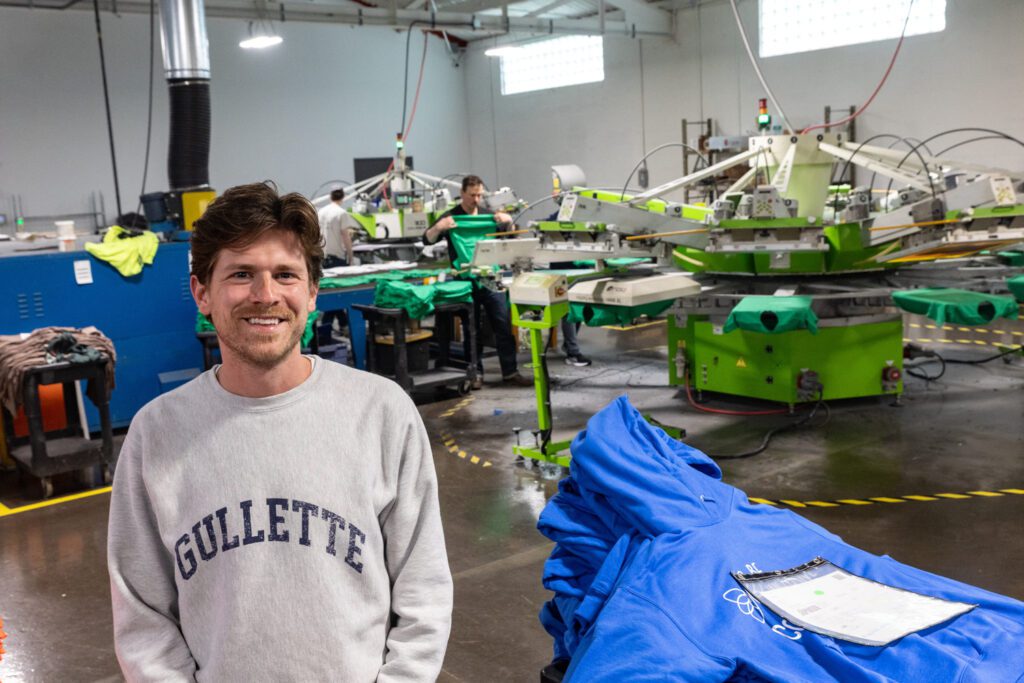


“You can see it in the bottom right corner. It’s blurry, but that was cool,” said Stephen Gullette, the marketing and social media specialist for JŪPMODE, as he pointed to one of the JŪPMODE designed mugs visible in a shared photo of the show’s upcoming production.
“I noticed it this morning,” he said the day after NBCUniversal announced the show.
“They had searched on our website a couple of items they wanted,” and asked him if they could use those items for the show. “I’m excited. We were talking this morning about how they might portray it [Toledo].”
Gullette said he was a bit worried about Toledo getting a portrayal like the one on the Netflix show A.P. Bio, which he said took a number of jabs at the city. Undeniably, he said, the show will poke fun at Toledo, but hopefully, “nothing too serious.”
However, JŪPMODE’s retail art director, Shannon Mossing, who designed much of the Toledo specific merchandise the studio chose, said it was exciting and she was honored to have her designs in the show which represented Toledo.
Another Toledo businesses contacted by the studio was local coffeeshop Black Kite, whose general manager, Emerson Dupont, said, “I gave them a bunch of cups,” for reference.
The Toledo Free Press was not contacted by the show because it wasn’t in operation yet. The TFP website didn’t officially go live until August 2024, months after Gleeson’s visit.
Either way, it’s clear there will be at least an attempt to portray Toledo in a genuine way, served up alongside a tongue-in-cheek snapshot of the floundering print local news industry.
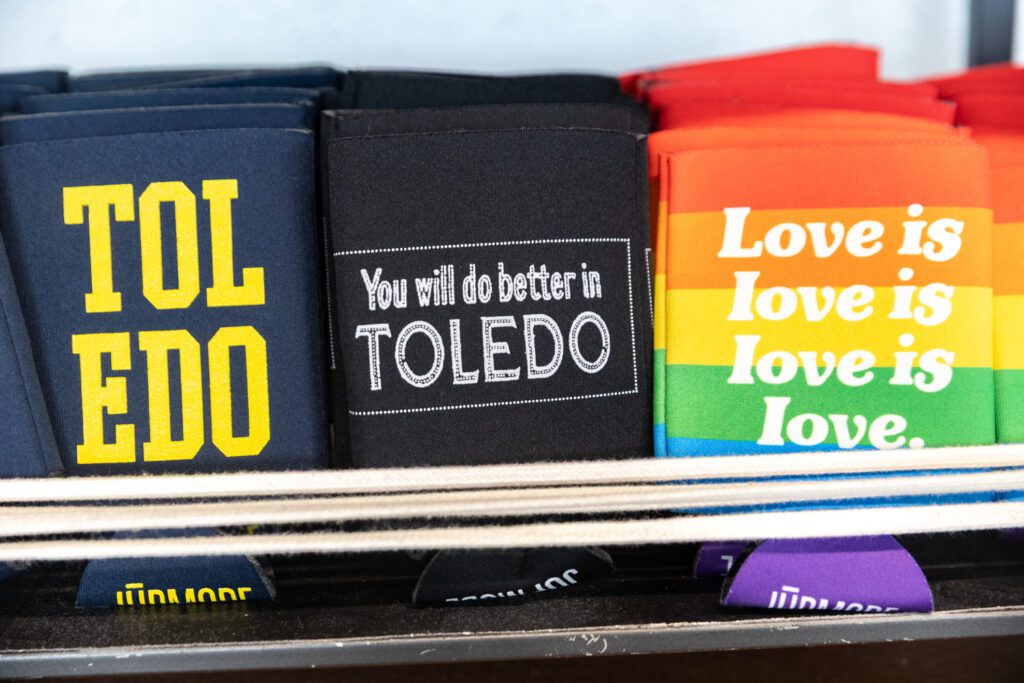
Young birders club leads field trip
OAK HARBOR— When the Ohio Young Birders Club (OYBC) led a free youth field trip May 17 at Magee Marsh Wildlife Area, the Toledo Free Press was on hand to chat with some of the youngest birders in attendance at the Biggest Week in American Birding.
The mission of OYBC, a program of Black Swamp Bird Observatory (BSBO), is to encourage, educate and empower youth conservation leaders. Members participate in field trips and service projects and present an annual conference.
Some of the birds the youth spotted on their hike included a bald eagle on its nest, a common nighthawk, a mourning warbler, Baltimore orioles, yellow warblers and warbling vireos.
Students were accompanied by several adults, including Jamie Cunningham, education director and statewide coordinator for OYBC, and Kenn Kaufman, renowned birding expert behind the Kaufman Field Guide series. Kaufman said he was there to lend support and answer questions while the young people took the lead.
Kaufman is married to Kimberly Kaufman, executive director of BSBO, who played a key role in starting the OYBC in 2006 after a few young people came to BSBO staff searching for a youth birding organization. When they couldn’t find one, they decided to create one.
“Rather than try to tell the kids what the club would do, we just asked, what would you like this club to be?” recalled Kenn Kaufman. “So, they named it; they came up with the ideas for the programs.”
At the first annual conference, Kaufman said all the speakers, including the keynote, were under the age of 20.
“And so it’s been a principle of the Ohio Young Birders Club ever since that it’s an organization where the young people can shine,” he noted. “It’s not adults taking kids around and lecturing to them.”
The OYBC has become a model for youth birding programs around the country, with BSBO staff helping to create similar programs in more than 20 states and two other countries. The group offered two free field trips for birders under the age of 18 during this year’s Biggest Week in American Birding, the festival organized by the BSBO.
Factory farms: The negative impact on human health, livestock
This is a limited series on farming. The next story will focus on local family farms.
(⚠️ Content Warning: This story contains descriptions of animal cruelty and graphic conditions inside factory farms, which some readers may find disturbing.)
Americans eat a lot of meat. We each eat an average of 116 pounds of chicken, 84 pounds of beef and 66 pounds of pork, annually. To be able to consume as much meat as we do, we rely on factory farms. There are presently 24,000 factory farms that raise approximately 1.7 billion animals in the United States.
A factory farm is a large-scale facility where animals like cows, pigs and chickens live primarily indoors in crowded conditions. These farms focus on boosting production while cutting down on costs. Factory farms are also called concentrated animal feeding operations, or CAFOs. Here, animals are often kept in tight spaces and raised in bulk to meet high demand.
The EPA’s 2020 report on Concentrated Animal Feeding Operations (CAFOs) recorded 257 permitted sites in Ohio. However, the real number could be much higher when considering facilities that operate without permits. Pinpointing the exact count of CAFOs in Ohio remains a challenge. A map of CAFOs in the Western Lake Erie Basin can be found here.
Effect of factory farms on human health
Dr. Kathleen Longo, from Ann Arbor, who is board-certified in internal medicine and worked at the VA in primary care, now volunteers for organizations like the Physicians Committee for Responsible Medicine and Mercy for Animals. I interviewed Longo about the impact of factory farms on human health.
The first topic we discussed was the spread of antibiotic-resistant bacteria. Longo felt that “they use so many antibiotics in the farmed animals because they’re so confined in small spaces that they can get skin diseases and they can get diarrhea, and it passes quickly to the other animals. So, once those antibiotics are used in livestock farming, it promotes the bacteria to become more resistant. And so, then, that’s less antibiotics that we can use for humans.”
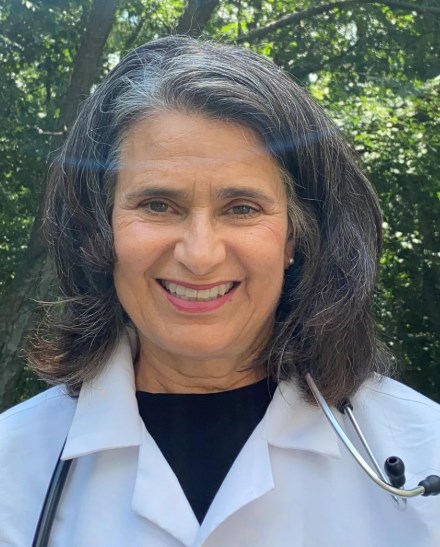
We then talked about diseases that can be spread by animals, or zoonotic diseases. Factory farms often crowd animals together and lack proper sanitation. These settings help diseases that move from animals to animals and spread quickly.
Swine flu, avian flu, salmonella and MRSA are found in this type of facility. In fact, about three out of every four new infectious diseases come from animals. Large-scale animal farming has played a significant part in their spread.
In regard to pollution and health, Longo stated that “when you think about the factory farm runoff into the water and into the soil, all their fecal organisms from the animals pollute the surrounding water and pollute the surrounding soil, so that is a chance for it to contaminate the food products, or contaminate a farmer’s field and contaminate your water supply.”
Wastewater runoff can also include nitrites, heavy metals and pesticide residues. These substances have been linked to cancer and reproductive issues in surrounding communities.
Factory farms also release gases, such as ammonia and hydrogen sulfide, into the atmosphere. These emissions can cause breathing problems, including asthma and bronchitis, among workers and people living nearby.
Concerning foodborne illnesses, animals kept in factory farms often face stressful environments, which weakens their ability to fight off infections, such as Salmonella and E. coli. This raises the risk that these bacteria will end up in meat and dairy products. Worldwide, about 35 percent of foodborne illnesses are tied to meat, dairy or eggs from these farming systems.
Working on a factory farm can be challenging. Factory farm workers often experience dangerous job conditions. They face a higher risk of injuries, breathing problems like chronic bronchitis, and mental strain due to weak labor protections.
Negative effect on farm animals
Another source for this story was Dr. Tim Reichard. Reichard served for 22 years as chief veterinarian at the Toledo Zoo and was a member and chairman of the Animal Welfare Committee of the American Veterinary Medical Association. Reichard grew up on a small dairy farm in western Pennsylvania, and, at that time, his family had a herd of 40 cows.
He believes very strongly that animals are not treated well at factory farms. In response to the poor treatment of animals, Reichard focuses on animal rights and promotes the Five Freedoms for Livestock. The Five Freedoms for Livestock (Figure 1) are internationally recognized principles for evaluating and promoting animal welfare.
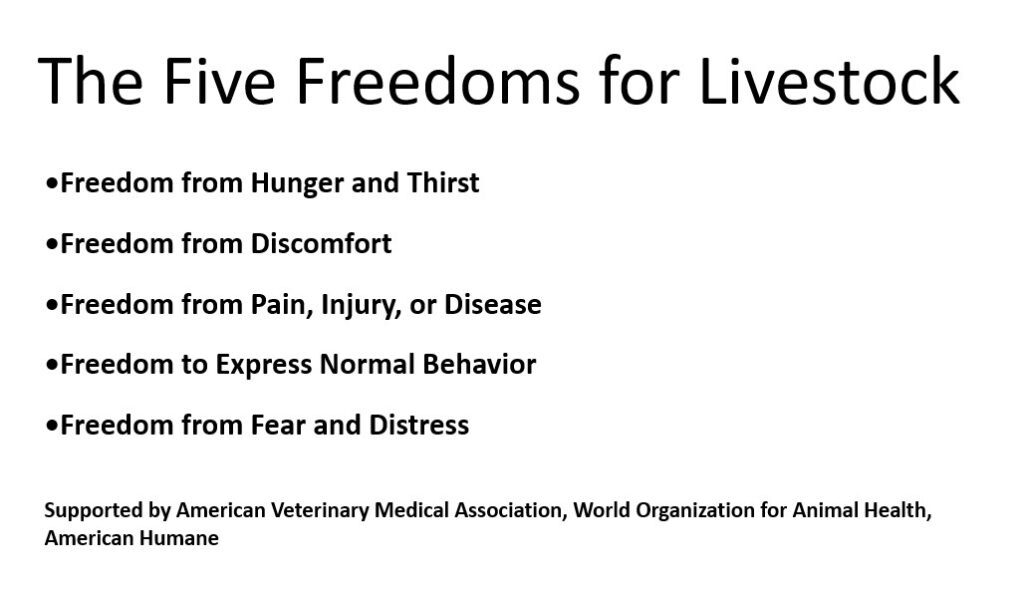
These guidelines are often seen as the standard for humane treatment and have been adopted by groups like the American Veterinary Medical Association, the World Organization for Animal Health, the ASPCA and American Humane. They aim to guide farmers, veterinarians and policymakers in creating better living conditions for animals while considering the practical challenges of farming systems.
Managing a factory farm involves confining large numbers of animals, such as cows, pigs and chickens, in highly constricted crowded environments, like cages, stalls, barns or feedlots to produce meat, milk and eggs.
In reality, the farming industry often treats animals as if they were unfeeling assets rather than the intelligent, complex and emotional creatures they are. Most of us do not get to know what they’re like since we only know them as meat from the grocery store.
Because of these issues, there is resistance to factory farms across the country. Locally, Lake Erie Advocates, Lake Erie Waterkeepers, Wood County Citizens Opposed to Factory Farms and the Environmental Law & Policy Center have been fighting factory farms for many years.
“When they’re kept in those small areas, and a lot of times they’re on wire, it affects the bottom of their feet – the leg deformities and so forth that occur from being in that environment – they can barely stand anymore. It leads to arthritis,” Reichard said.
Confinement of animals on factory farms
Extreme confinement is a characteristic of factory farming that leads to boredom, frustration, stress and other serious concerns.
As Reichard mentioned, hens raised for egg production are often kept in battery cages – small enclosures made of wire. Each hen is given a floor area equal to the size of a sheet of printer paper, and the cages are usually about 15 inches tall. This small space prevents the birds from fully spreading their wings without hitting the cage walls or other birds. As a result, these cages restrict nearly all of a chicken’s natural behaviors, such as dust-bathing, nesting and scratching.
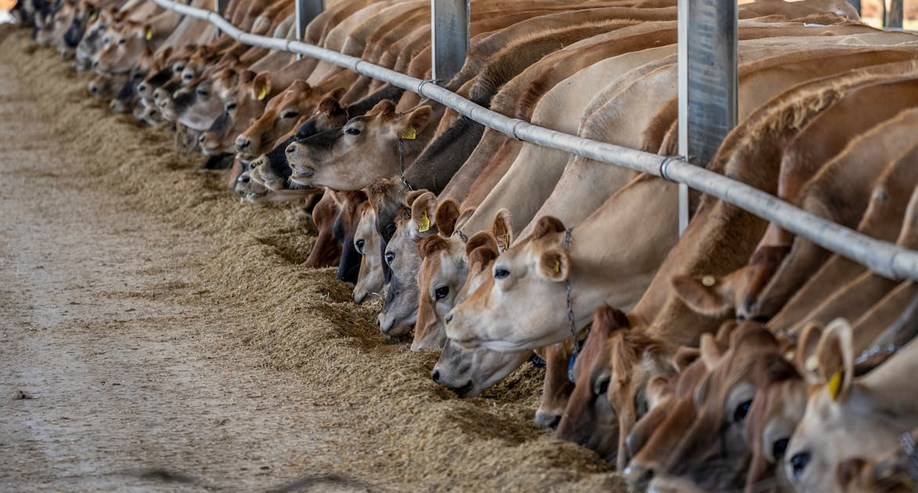
Cattle raised for beef often begin life grazing on open land, eating a traditional diet. This period ends around one year of age when they are taken to the (CAFOs). These facilities are densely packed indoor spaces, where cattle are fed mainly corn until slaughter. The overcrowding, poor sanitation and low-quality feed contribute to significant health issues. There is an increased risk of bacterial infections, prompting the routine use of antibiotics and hormones. These are used to maintain health and ensure the cattle reach the desired slaughter weight.
Most pigs raised for meat production in the United States live indoors in confined, overcrowded facilities.

Pregnant sows are commonly kept in gestation crates for their four-month long pregnancies. These cramped enclosures are so small that the animals can only stand or lie down and cannot turn around. As well as limiting movement, these crates deprive the sows of mental and physical stimulation.
Shortly before giving birth, sows are moved to farrowing crates. These enclosures are also restrictive, with the added restriction of little contact between mother pigs and their piglets, except for nursing. Once the piglets are weaned, the sows are re-impregnated and go through the same cycle of confinement and stress, repeating this process until they are sent to slaughter.
“With swine operations, it’s concrete or mats or whatever, because you have to have a method to clean them out,” said Reichard. “And being in that situation, it leads to a lot of a lot of arthritis, and just if you can imagine where you can barely, barely move around.”
Also concerning to Reichard was that “chickens and pigs kept inside could be seriously overheated without adequate cooling in summer temperatures.”
Painful procedures on factory farms
Animals are often subjected to painful procedures while they are kept in overcrowded conditions, including during transport. When animals retain their beaks, horns or tails, they may unintentionally or intentionally injure one another. To prevent this, practices, like dehorning cattle, trimming chickens’ beaks and docking the tails of pigs, are carried out. These procedures are typically done without providing any form of pain relief.
Cattle are treated at an early age to prevent horn growth. For very young calves, disbudding (removing horn-producing cells) is done by using a hot iron or caustic paste before horns begin to develop. Reichard prefers that the caustic paste not be used since it can run into calves’ eyes. When the horn tissue has attached to the skull, cutting through the bone (dehorning) may be required. Disbudding is usually preferred over dehorning as it is less invasive, carries fewer risks, and is less painful. Even disbudding can cause prolonged pain lasting weeks or months.
Farmers disbud or dehorn cattle to reduce the chances of horn-related injuries. Horns can cause bruising during transport and pose risks to other animals and handlers on the farm.
Historically, tail docking has been performed on pigs, sheep, dairy cattle, and cattle reared on feedlots with slatted floors. The procedure has fallen out of favor with cattle.
Pig producers commonly dock tails to reduce the risk of tail biting and chewing among pigs in shared pens. Tail biting can be problematic because it can cause infection, reduce weight gain and increase the need for veterinary care.
Tail docking is typically carried out within the first week of life, often along with other procedures, such as castration, teeth clipping and ear notching. In piglets, scissors, sharp instruments or a hot knife are often used to remove most of the tail.
Beak trimming, also called debeaking, is performed on chickens raised for laying eggs and breeding stock used for meat production. The procedure involves removing a portion of the beak using either a heated blade or a high-intensity infrared light. Typically, between one-third and two-thirds of the beak is removed.
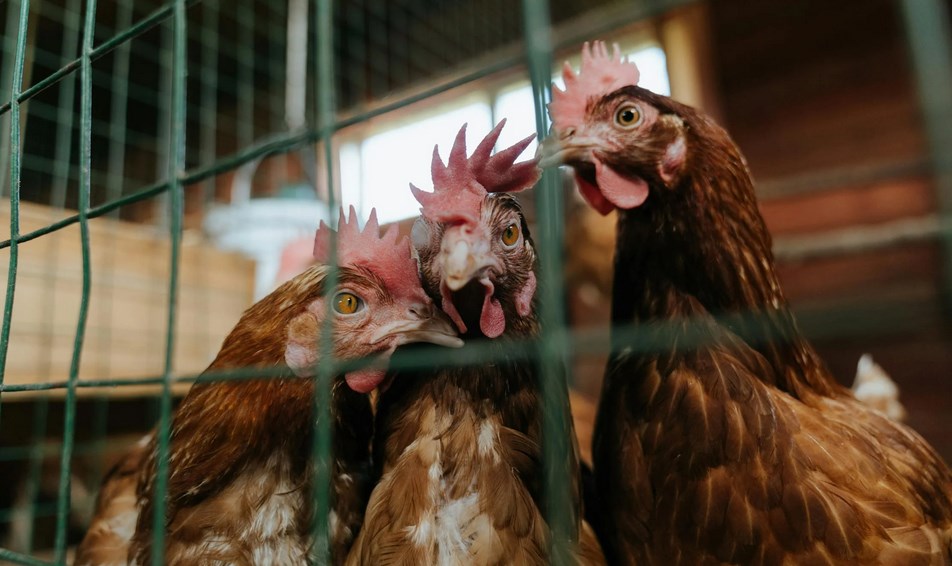
The primary purpose of beak trimming is to decrease the pecking of feathers, wattles and combs. According to Reichard, the debeaking is also done “because chickens in confinement will go after each other if there’s a little bit of blood, so they can kill each other.”
One of Reichard’s frustrations is with the USDA Animal Welfare Act (AWA), enacted in 1966, that addresses animal well-being. It is the primary federal law in the United States regulating the treatment of animals in research, exhibition, transportation and commercial sale. The act addresses housing, handling, sanitation, food and water, veterinary care, exercise and psychological well-being, except for farm animals. Reichard expressed great concern that the USDA Animal Welfare Act does not cover farm animals used for food or fiber.
In summation, factory farming treats animals inhumanely by overcrowding, forcing animals to live in uncomfortable environments and performing painful procedures to make them more manageable. Factory farming also poses serious risks to human health through environmental contamination, disease proliferation, antibiotic resistance and zoonotic diseases.
Garmin selects Toledo for 1st Marathon Series
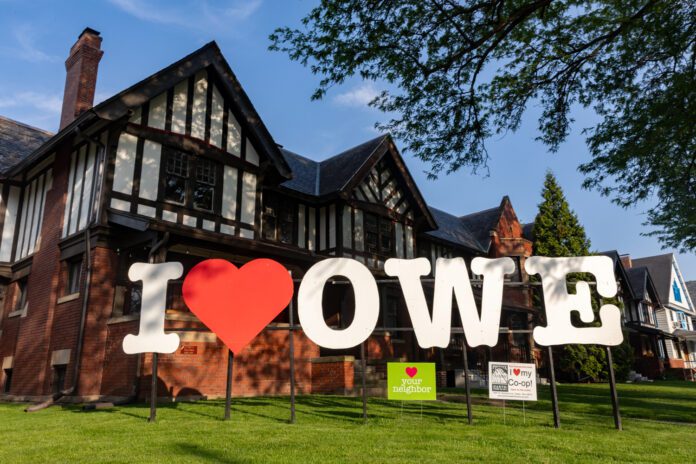
Training by Dave’s Running Shop begins May 19
TOLEDO – If you missed running in the 48th Mercy Health Glass City Marathon in April — or perhaps you want to compete in two marathons here in the same calendar year — don’t fret. You’ll get another chance to navigate Toledo’s fast, flat terrain when Garmin hosts its first Garmin Marathon Series on Sept. 21.
Garmin, a Kansas City global company known for its GPS running watches, satellite communicators and vehicle dash cams, is partnering with Run Toledo to host “a world-class event right in your own backyard,” according to Elliott Scott, Garmin’s lead public relations specialist, who was in Toledo last month to scout out the area and meet contacts.
The premier running event will include a full marathon, half-marathon, 10K and 5K, and is designed to accommodate runners of all levels, from beginners to elite athletes. The USA Track & Field (USATF) certified course will take runners to the Toledo Zoo and Toledo Museum of Art, and through the Glass City Metropark, Rossford, Perrysburg and Maumee. The race will start and finish at Promenade Park in Downtown Toledo.
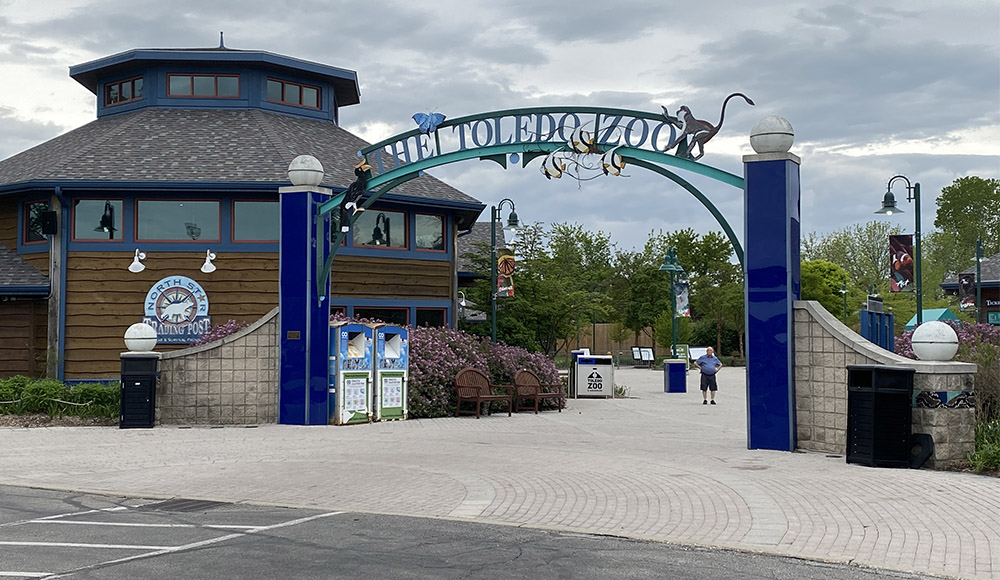
The series will be preceded by a free two-day expo at the Glass City Convention Center and will culminate with a finish line festival featuring food trucks.
Scott added that Garmin is also exploring a charitable partnership to give back to the community, and “to identify a cause that makes sense and is something we can support.”
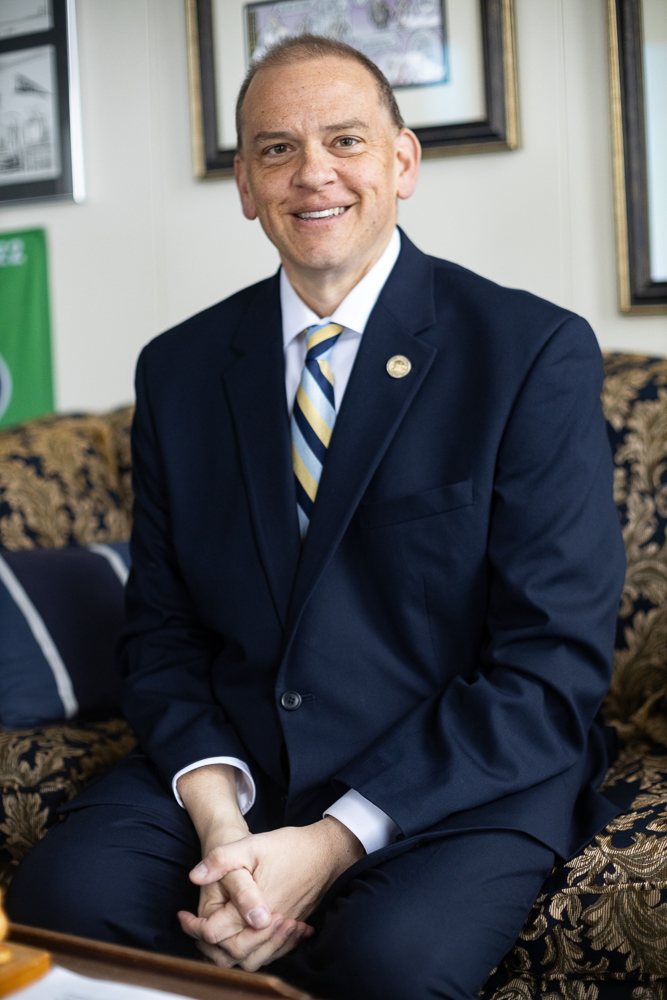
He noted that the idea to host Garmin’s first marathon series sprouted during a discussion among Garmin executives about how to celebrate runners. He explained that their conversation focused on doing something meaningful and authentic that would allow them to tell the Garmin story in a new way.
“We sponsor races all over the world – and that’s great, we’ll continue doing that – but let’s produce something on our own,” he said, recalling the company’s decision to produce their own race. “Let’s have the freedom to dream big and create something really unique within running, and so that’s where it started.”
From there, Garmin surveyed several U.S. cities and considered various cultural and aesthetic factors, like a fast, flat course terrain which would attract a wide variety of runners of all skill levels. They also took existing race schedules into account; Garmin wanted to be an additional race and not a substitute.
Scott noted that the race heavily depends on collaboration with public entities in Toledo as well. He said Toledo Mayor Wade Kapszukiewicz, Lucas County commissioner Pete Gerken, Destination Toledo and Run Toledo were all enthusiastic about the idea, and shared a vision for what it could become a driver of awareness and tourism for the city.
When we came to them [city leaders] with this idea, they bought into it very quickly. You really need your city and county partners to be enthusiastic and engaged in it, and that was, I think, what put Toledo over the top.
Elliott Scott
“Toledo has a great running community and a beautiful river front, and that’s exciting. Think about people coming here and experiencing a city they might never have been before. I can say from the races I’ve ran that there is no cooler way to discover a city than to run a marathon and see 26 miles of it,” Scott exclaimed.
Run Toledo oversees ‘nuts and bolts’
While Garmin will handle marketing and atmosphere, Run Toledo will be the race management company in charge of the “nuts and bolts,” according to Clint McCormick, Run Toledo’s senior event director and chief operator.
A division of Dave’s Running Shop, Run Toledo has been managing and developing short and long running and multi-sport races in Northwest Ohio and Southeast Michigan since 2009.
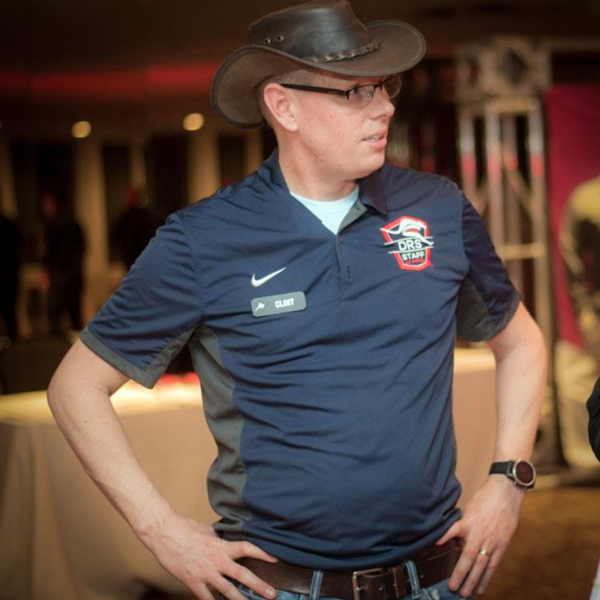
Run Toledo, which also manages the Glass City Marathon, Run the 419 Series and Susan G. Komen Race for the Cure signature events, will oversee course design, operations, logistics and coordination with law enforcement. Run Toledo will also play a key role in recruiting local vendors and volunteers, and bring in other partners, like sports medicine and pace teams.
Aside from the timing — one in spring, the other in fall — McCormick noted a key difference between the Garmin and Glass City marathons will be the level of corporate sponsorship with the Garmin brand. Garmin will not only focus on running, but also highlight its wide range of products and divisions during the two-day trade show, which McCormick likened to Jeep Fest. It will be a celebration of lifestyle, technology and community.
“While Garmin is an international name, the focus will be on the local community,” he emphasized. “I think that’s where we [Run Toledo] play a huge role in making that happen. I think our partnership plays out nicely.”
Run Toledo is also providing a tailored training program for the Garmin Marathon Series. Through Dave’s Training Programs, the largest training program in the region, runners can sign up for a training program beginning May 19.
Registration for the Garmin Marathon Series, expected to attract 10,000 participants, is currently open for all distances; Scott advises that runners should sign up now for two reasons: There’s an incremental price increase as the race date nears, and certain distances could sell out.
“So, it’s better to secure your spot now because it is completely possible, and even likely, that it will be sold out by the time race day comes around,” Scott noted, adding that the cost to enter the race is competitive.
“We see [the series] as an opportunity to make it a really special environment that people remember, and we hope it becomes one of their favorite races.”
Runners: To register for the race, CLICK HERE.





